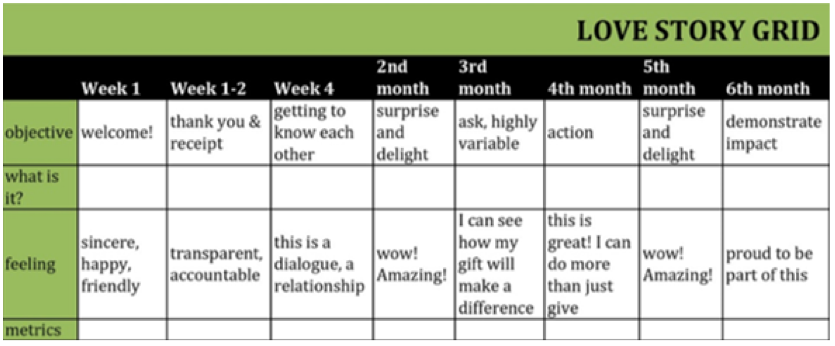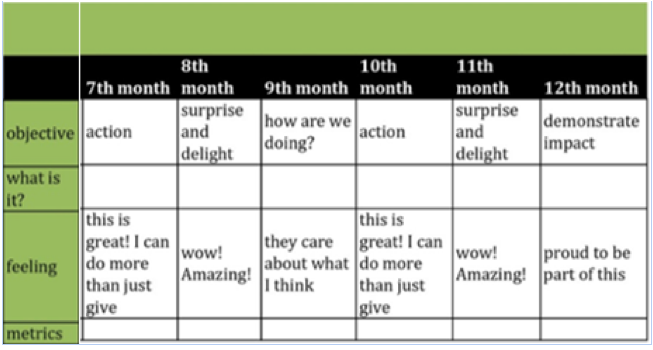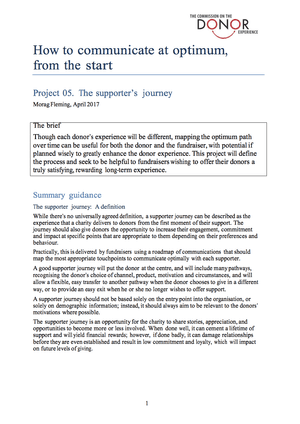CDE project 5 section 3: case study on Ontario Nature
- Written by
- The Commission on the Donor Experience
- Added
- April 28, 2017
Case study
The Ontario Nature Love Story
As fundraisers, we must remember that our biggest champions and advocates are our staff and volunteers, and we need to have as many voices as possible sharing their knowledge and passion with other people.
The stories and information that they can provide is absolutely critical to develop a really meaningful, authentic and organic supporter journey that results in donors feeling engaged and part of a team with shared values and passions.
This is not just a supporter journey...this is a love story
The Ontario-based fundraising agency, Agents of Good, have been working with Ontario Nature over a period to produce a supporter journey that is based on a highly donor-centred approach.
The first thing that had to happen was internal change. This story didn’t start with a supporter journey grid, it started with a need to get everyone in the organisation on board to provide a donor experience that was authentic and genuine, something that they valued and of which they felt part.
The team at Ontario Nature started a process of change across the organisation, working with communications, programmes and the executive team to develop the understanding that donor-centred fundraising wasn’t just about being more lucrative, but would really build the community.
The thing that staff and volunteers at Ontario Nature are most passionate about is the cause – which means that they have something very much in common with the donors. The Love Story is about finding ways to capture voices and share information from a range of people, and to create a real sense of belonging.
Using field reports from voices on the ground, and sharing voices of other donors and members in appeals and communications, created a sense of conversation and dialogue. Donors connect with the shared values and voices of the organisation.
“It’s a great message to share with staff and volunteers that sharing our passion and stories makes our members and donors have a great experience and together, we advance the whole mission. Everyone started sharing stories and information that could be sent to donors that demonstrated need, impact and started to develop a ‘bridge’ between the programmes staff and donors. It developed real enthusiasm for seeing donors as partners, as people who shared values rather than people who simply donate funds” (Ontario Nature).
Therefore, instead of starting with WHAT a piece was going to be, the basis of the donor journey became objectives and feelings. It is not a rigid journey that takes place and is replicated, but a journey that involves relevant communications at key times to produce an experience that is rich, authentic and relevant. Key factors in this journey are:
- Knowing donors
- Connecting values and emotions
- Using the right voices
- Feelings and objectives instead of set ‘pieces’
For the first few months, a new member will be part of an ‘onboarding’ welcome journey, which will involve a number of interactions, including a telephone call. Following this, all donors (in this case members) receive the same things.
“When the starting point is ‘how do we make them feel’ over ‘we send them this brochure at month 5’ a donor journey takes on a very different approach” (Ontario Nature).
Instead of the touchpoint being ‘let’s send a survey’, the feeling was ‘how do we make them feel that this is a dialogue and a relationship?’ Instead of the starting point being ‘let’s ask them to tell us something’, the starting point was ‘how do we make them feel that we care what they think?’
For example, a member survey will be sent in some years, while there will be different interactions in others depending on what is happening at the time. An example of this might be asking donors what they want to see on their membership card, giving five or six options and then giving feedback about the winning design, which will then influence some of the other communications in that year.
“Below is a skeleton grid of how this works – ‘what it is’ will be different each year.


At every point, the donor is at the heart of the journey. What this means in essence is that it might be a small action – for example, a social media interaction – but the feeling that the donor gets is a highly thought through emotion that will help to increase loyalty.
The Results
Overall, the programme has enjoyed great growth and, whilst it is not always possible to attribute an ROI to every interaction (by the very nature of the programme, there are multiple touch points – thus, it is focused on overall growth rather than on individual campaigns), there are notable ‘wins’ including 45% response rates to lapsed reactivation mailings. Overall, Ontario Nature has achieved 143% growth in the programme over approximately five years.
This case study is a combination of information provided, and conversation with Agent Jen Love, Agents of Good – complied by Rachel Hunnybun for the Commission on the Donor Experience.























